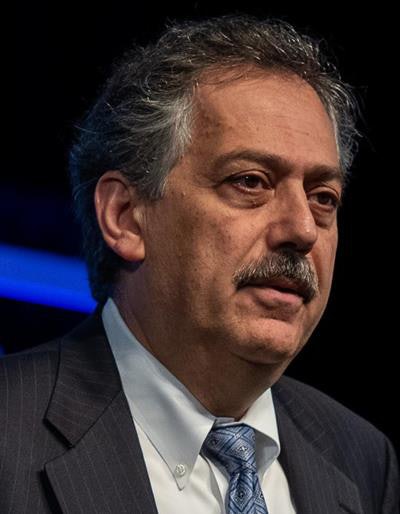
The early recruitment of medical students into nuclear medicine and molecular imaging is the key to the specialty's future, said Dr. Vasken Dilsizian during his president's address on Sunday at the Society of Nuclear Medicine and Molecular Imaging (SNMMI) virtual annual meeting.
"When I asked faculty colleagues and residents how they chose nuclear medicine as a specialty, the answer boils down to a single factor -- exposure to direct, hands-on research for clinical experience and the influence of a member or mentor who took time to introduce them to the promise of nuclear medicine practice," Dilsizian told the virtual attendees. "Such research exposure and collaboration between students and mentors often extend throughout the medical school years and directly influence the choice of specialty."
 Dr. Vasken Dilsizian, SNMMI president for 2019-2020.
Dr. Vasken Dilsizian, SNMMI president for 2019-2020.Since the COVID-19 pandemic forced the SNMMI to shift its annual meeting to an online format, the organization has worked to develop this virtual vehicle with an eye toward its future growth, it said. To attract more young people to the specialty, the SNMMI also changed its bylaws to include a membership category for medical students and to offer opportunities to attend meetings and seminars. Another key society program offers funds for 10 weeks of summer research to medical students between their first and second years for them to consider careers that include medical or clinical research or academic medicine.
The SNMMI also should be the "natural home base" for new graduates from residency programs and those who hold American Board of Nuclear Medicine (ABNM) certification, Dilsizian told viewers of his virtual address.
In fact, more nuclear medicine and radiology residents are currently pursuing dual-board training from the ABNM and the American College of Radiology, as employment opportunities escalate for graduates with expertise in interpreting PET/CT and PET/MR images in line with "the need for highly skilled subspecialists to perform molecular-targeted radiopharmaceutical therapies," he said.
Given that the field of nuclear medicine and molecular imaging is by nature interdisciplinary, its future success will also rely on the participation of referring physicians who are "vital partners ensuring positive outcomes for patients," said Dilsizian, who also serves as professor of radiology and medicine at the University of Maryland School of Medicine and chief of the division of nuclear medicine at the University of Maryland Medical Center in Baltimore.
"The value of our field will ultimately be determined by whether image-guided diagnosis changes medical or surgical therapy and impacts patient outcome," he said. "These clinical colleagues are not only the gatekeepers to nuclear medicine and molecular imaging, but they are also in important roles in research and clinical trials often spurring new ideas."
International collaboration and inclusion were among Dilsizian's priorities during his time as president. Currently, nearly 15% of SNMMI members are based outside the U.S., representing more than 84 countries. Approximately 66% of annual meeting abstract submissions and 75% of manuscript submissions to the Journal of Nuclear Medicine are from outside the U.S.
"Multinational diversity and inclusivity will only enhance SNMMI's membership, making the society a clear global leader," Dilsizian said. "Our success depends on our dedication to maintaining both the spirit of and commitment to the global community in our field."
The SNMMI virtual meeting continues all day on Monday and Tuesday.




















